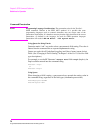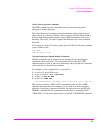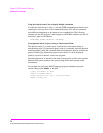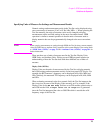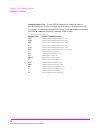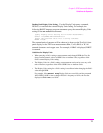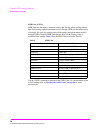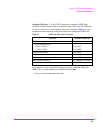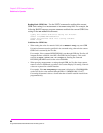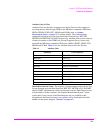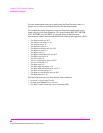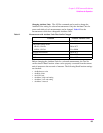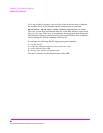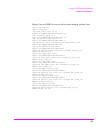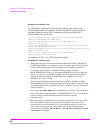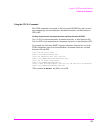
80
S:\agilent\8920\8920b\PRGGUIDE\BOOK\CHAPTERS\guidelin.fb
Chapter 3, GPIB Command Guidelines
Guidelines for Operation
Reading-Back GPIB Units.
Use the UNITs? command to read back the current
GPIB Units setting for a measurement or instrument setup field. For example, the
following BASIC language program statements read back the current GPIB Units
setting for the
TX Power measurement:
!Query the current GPIB Units setting for TX Power.
OUTPUT 714;"MEAS:RFR:POW:UNIT?"
!Enter the returned value into a string variable.
ENTER 714;A$
Guidelines for GPIB Units
• When setting the value of a numeric field (such as AFGen1 Freq), any non–GPIB
Unit unit-of-measure must be specified in the command string, otherwise the current
GPIB Unit is assumed by the Test Set.
For example, if the command RFG:FREQ 900 is sent through GPIB, the Test Set will
interpret the data as 900 Hz, since HZ is the GPIB Unit for frequency. This would
result in an Input value out of range error. Sending the command
RFG:FREQ 900 MHZ would set the value to 900 MHz.
• When querying measurements or settings through GPIB, the Test Set always returns
numeric values in GPIB units, regardless of the current Display Unit setting. Numeric
values are expressed in scientific notation.
For example, if the TX Frequency measurement is displayed as 150.000000 MHz
on the Test Set, the value returned through GPIB is 1.5000000E+008 (1.5
×
10
8
).
Converting the returned value to a format other than scientific notation must be done
programmatically.



